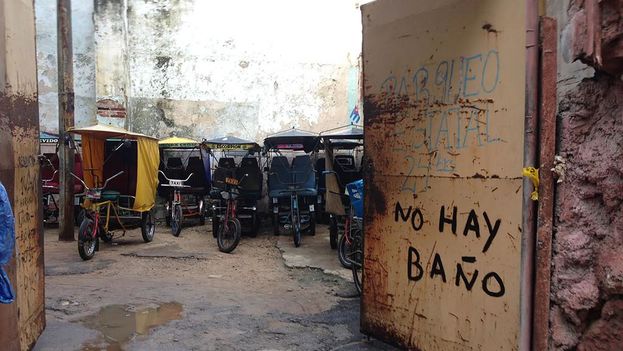
![]() 14ymedio, Reinaldo Escobar, Havana, 16 October 2015 — Sometimes it is hard to find in the Cuban urban landscape a square yard free of disaster. Perhaps it is more accurate to say free of the traces of disaster. Above is an image from a Havana street.
14ymedio, Reinaldo Escobar, Havana, 16 October 2015 — Sometimes it is hard to find in the Cuban urban landscape a square yard free of disaster. Perhaps it is more accurate to say free of the traces of disaster. Above is an image from a Havana street.
Where do I start?
There was once a building here, until it collapsed. Two hundred yards from Chinatown in the Central Havana, a square yard of this space would cost a fortune under free market conditions; people would be fighting over it for a department store, offices of housing. But it remained like this, free like a drowning man, until the scarcity of public transport led to the appearance of pedicabs and, with them, the need for a site to park them.
Each of these rolling artifacts contains the history of other disasters. The seats, awnings, struts, every screw, every washer conceals at least three crimes. Even the air that inflates the tires may be illegal.
The parking lot belongs to the State, as indicated by the faded blue letters. It is as you imagine it, as a comedian friend says, which means that it works badly or at least without any controls and nobody knows how much money is collected for its use nor how many things it is used for.
The apparently unnecessary sanitation warning deserves a mention. Why would anyone expect there would be a bathroom open to passersby in a pedicab parking lot? Where else has anyone seen such a sign? Of course there should be a bathroom, and it should be clean, with water and toilet paper.
Nor is there WiFi access to the internet, nor a sign that says the parking lot does not discriminate against any person, but there it is, an image that typifies early 21st century Cuba and, in the background, a tiny and innocent little flag that at the end of the day is the only space that seems to save itself from the disaster.
